Advertisement
Whatever the reason for changing a prop, it's an easy project that almost anyone can handle.
There may be lots of different reasons why you might want to change out the prop on your outboard or sterndrive. It might be damaged, it may possibly be the wrong size or pitch for your boat, or you may be swapping from aluminum to stainless-steel. Regardless, the way you go about the job will be the same and is something even a novice DIY'er with a basic set of tools can accomplish in less than a half hour.
Tip
Wearing disposable gloves when doing this job will keep grease and dirt off hands and fingers.
You've got this! Here's all you need to know.
Tech Support
Degree of Difficulty: Easy
Tools:
- Needle nose pliers
- Prop wrench or socket set
- Block of wood
- Razor knife
- Flashlight
Materials:
- Prop
- Cotter pin
- Grease
- Rags
- Disposable gloves
Time: 15 minutes
Cost: Depends on prop (ours cost about $250)
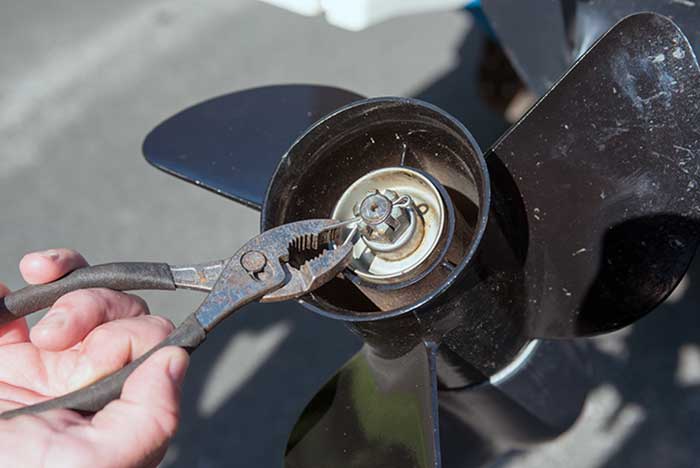
Photos: Mark Corke
Step 1: With the engine tilted up to a convenient working height, remove the cotter pin that prevents the prop nut from coming undone. Use a pair of pliers to straighten out the legs of the cotter pin before pulling it out. The cotter pin will not be reused so can be discarded.

Step 2: Unscrew the propeller nut with a suitable socket. You'll need to wedge a block of wood between the prop blades and the cavitation plate to prevent the prop from turning as you loosen the nut.
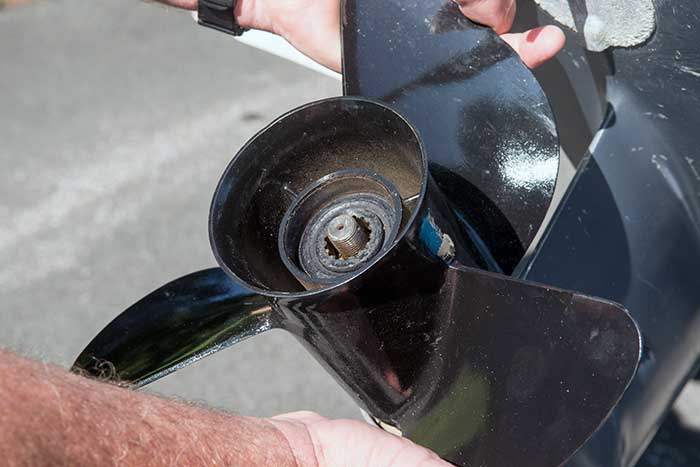
Step 3: Remove the nut and washer, then pull the prop off the splined shaft. The prop should slide right off, but if it's been in place for many years it may require a light tap with the wood block on the forward face of the prop to remove it.
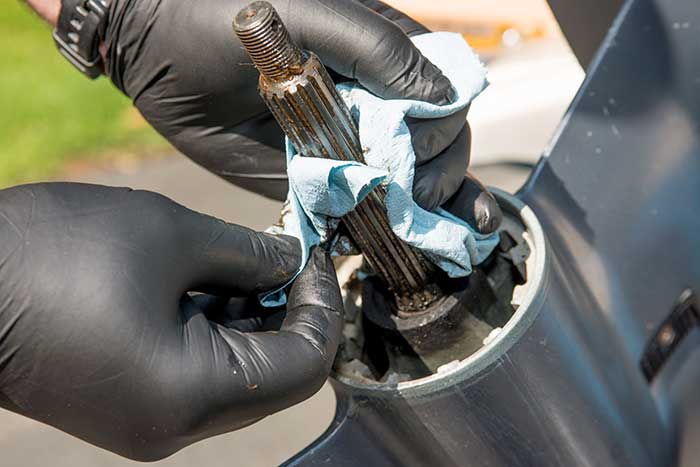
Step 4: Put the prop to one side then wipe the splined shaft with a clean rag and check for any signs of wear.
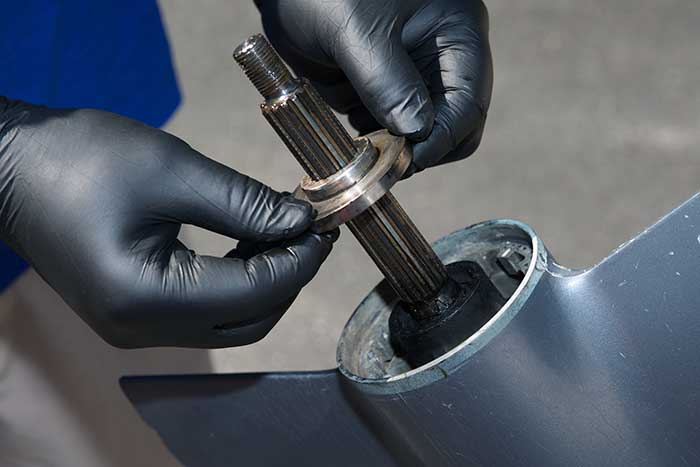
Step 5: Remove the thrust washer, noting that it often has a step in it which faces the propeller. This washer, like the prop, should easily slide off the shaft.

Step 6: Now's a great time to check that there's no monofilament fishing line wrapped around the prop shaft that can damage seals and bearings. If fishing line is present, cut it free with a sharp razor knife.
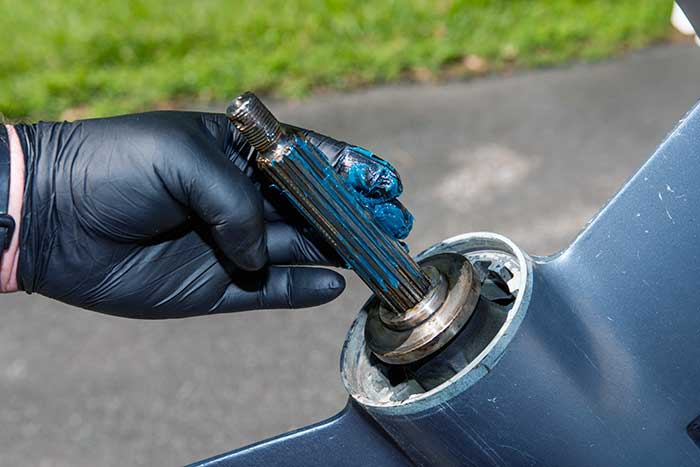
Step 7: Smear on a little waterproof grease. Use one that's recommended by the manufacturer, and never use any grease containing graphite. (Graphite is one of the most noble of metals in the galvanic scale and can quickly lead to severe corrosion of the outboard leg.)
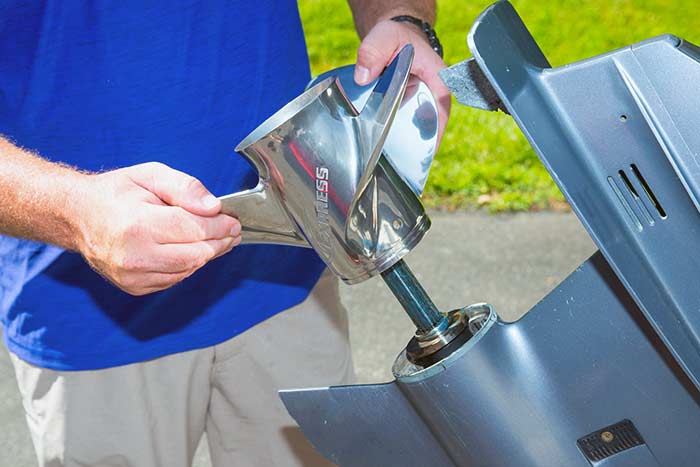
Step 8: Replacement is a straight reversal of the removal procedure: Slide on the thrust washer followed by the new prop, prop washer, and nut.

Step 9: Tighten the nut ensuring that the hole in the shaft aligns with one of the slots in the castellated nut. Either tighten the nut to the correct torque setting as specified by the manufacturer, or use a special prop wrench that will ensure that the nut is not overtightened. Use a new, suitably sized, cotter pin, passing it through the shaft before bending up the tails to lock the nut in position.
